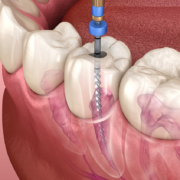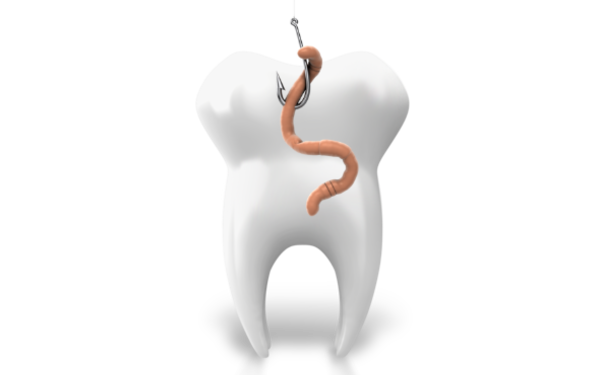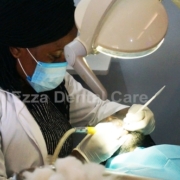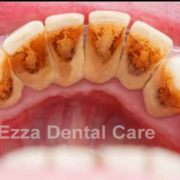After we stop expecting money from the tooth fairy or a rat with a secret underground bank, we become very possessive with our teeth. We do not want to lose any which is why the word extraction evokes a dread in us, a justified dread. Stronger than that dread however is the dislike for pain. Pain from the causative tooth and perhaps even fear of what we have not experienced yet, fear of a root canal therapy. We are going to explore why root canal therapy is that stone that kills many birds and why it’s bad reputation is based on smoke and mirrors.
What is Root Canal Therapy?
Root canal therapy is a dentistry treatment plan which aims at repairing and saving a tooth that is badly decayed, cracked or defectively filled. It is found in a specialty called endodontics which deals with the inner tooth structure id est, the pulp, blood vessels and nerves contained therein. It is a procedure that can easily be performed by a general dentist depending on the extent of the tooth’s damage and the comfort level of the dentist. In case it is a complicated case, the patient is referred to an endondotist who will provide specialized care.
Signs that you may need a root canal therapy
The question of whether or not you need a root canal therapy is best answered in the presence of clinical evidence from examination and investigations carried out by your dentist. There are however pointers whose frequency could be a sign that you may need root canal therapy. These include;
- Pain on biting or chewing.
- Teeth with deep cavities
What is involved during root canal therapy?
When you hear the term root canal therapy, your mind is probably plagued by ideas of its complexity, the pain involved, the cost and what not. Most of these are however just castles in the air considering that the procedure is easy and not as painful as your mind may have convinced you. The procedure is aimed at removing the infected pulp and cleaning out the canal.
The pulp is the innermost part of the tooth and contains the nerves and blood vessels which nourish the tooth. The canal from which the treatment gets its nomenclature is what holds the pulp. When the pulp gets infected, the infection can spread to the extradental tissues and can cause erosion of the jaw bone and may even seed into the blood. The inflammation resulting from the body’s response to the infection of the pulp causes it to swell and this results in the excruciating pain experienced.
As earlier mentioned, the aim of RCT (root canal therapy) is to remove the infected pulp and to clean out the root canal of any infection culminating in sealing of the tooth. Since the pulp can be dubbed the living part of the tooth, removing it results in its “death”. This is however not compromising for the tooth in terms of function or appearance since it can still obtain nutrients from the surrounding tissues. The pulp is majorly important as the tooth emerges from the gum and after this happens, it can be survived without.
Root Canal Therapy can be carried out in either a singular or multiple sessions depending on what needs to be addressed. Outlined below are the standard steps in which it is done;
- The dentist will carry out an intra and extra oral examination.
- They’ll then obtain an x-ray of the offending tooth to ascertain the extent of infection and spread if any.
- After that, the dentist will then anesthetize the area he is going to work on. This will result in numbness and thus absence of pain during the procedure.
- In order to isolate the tooth and to keep it dry and free from saliva, a rubber dam will be placed around the tooth.
- The dentist will the drill an access hole.
- Using root files, they will then remove the pulp and all contents of the pulp. They use water or sodium hypochlorite to remove the debris.
- After satisfactory removal of the pulp, the dentist may decide to seal immediately or wait for a week to pass. In case they choose to wait, they will place a temporary filling to keep the canal clean till the next appointment. They also place an antibiotic to clear off any microorganisms before they finalize the procedure.
- After the week is done, the dentist then does the final sealing of the root canal. He uses a sealer paste and gutta percha. Depending on the state of the tooth, further treatment may be necessary for example, crown, crown and post and so on which provide further strength to the tooth and enable it to maintain appearance and function.
After the procedure is done, you may experience numbness or discomfort or even slight pain. This can be handled with over the counter medication like ibuprofen or paracetamol. Put off chewing using the tooth until the numbness subsides. You can then upgrade to soft foods and subsequently, you can return to your previous diet.
Are there any complications with root canal therapy?
Like with any other procedure, complications may arise during or after root canal therapy. These maybe as a result of;
- A higher number of canals than anticipated and thus some may not be cleaned out.
- There may be an undetected crack.
- The restoration may be defective.
- The gutta percha may breakdown.
These call for involvement of a specialist who will either redo the RCT or may decide to extract the tooth.
Root Canal Therapy Vs Tooth Extraction
A root canal therapy is better than an extraction for as long as the tooth can be saved. This is advantageous for a number of reasons. No artifact can replace the authenticity of a natural tooth. When you have your tooth extracted, your smile, your chewing, how your teeth fit with each other are all negatively affected. To alleviate all these, you would need an implant which further increases cost. Extraction is like scorched earth policy, a drastic measure which must be avoided at all costs until it cannot be. Which is why you should always consider root canal therapy as your better option. This is available at Ezza Dental Care.






